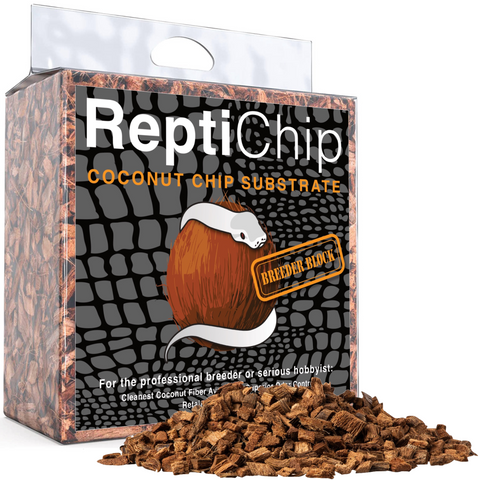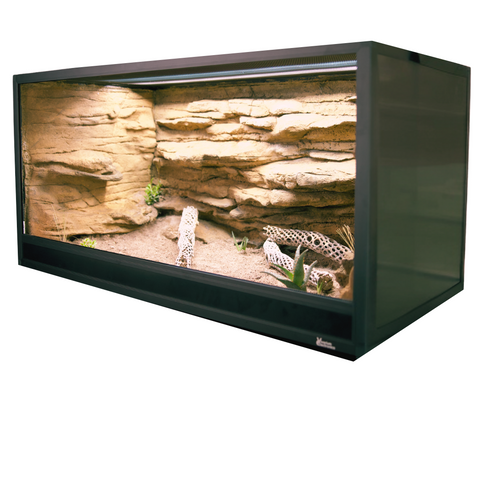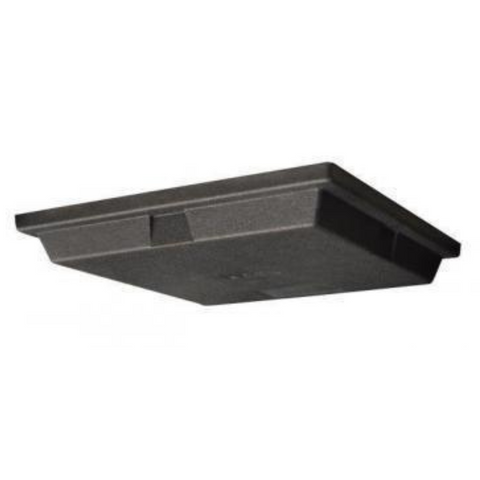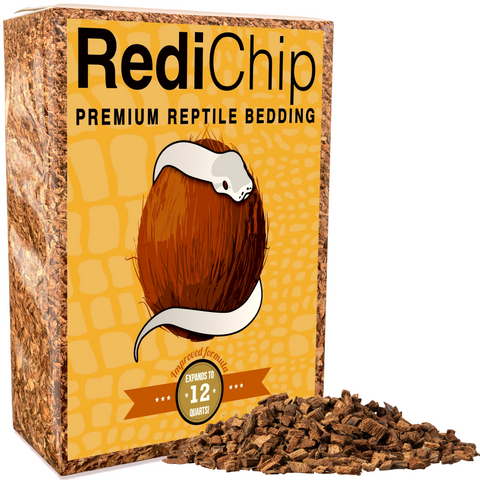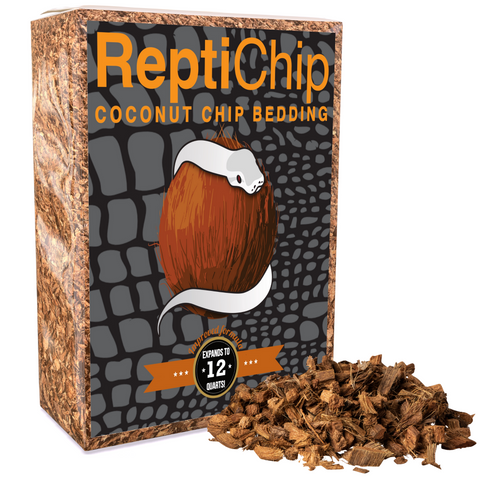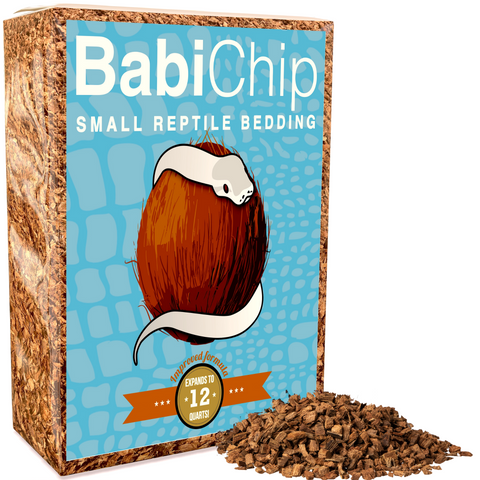Natural History
Ball pythons are small, non-venomous constrictor snakes native to the savannas, grasslands, and forest edges of sub-Saharan West and Central Africa. Their life cycle begins with a clutch of eggs laid by a female in a secure, humid location—often in abandoned mammal burrows or natural hollows. Females typically lay between 4 and 10 eggs per mating season, although larger clutches are occasionally recorded. Unlike many reptiles, female ball pythons exhibit maternal incubation behavior: after oviposition, the female coils around her eggs, using muscular movements known as shivering thermogenesis to regulate the temperature, maintaining consistent warmth until the hatchlings emerge. The incubation period lasts approximately 55 to 60 days, depending on environmental temperature and humidity.
Upon hatching, neonates are fully independent, capable of hunting and defending themselves without parental aid. Growth is most rapid in the first few years, especially when prey is abundant. Juveniles will undergo multiple sheds annually as they grow, with frequency declining as they approach adulthood. Sexual maturity is typically reached between 2.5 and 3 years of age, depending on factors such as sex, nutrition, and environmental conditions. Adult ball pythons commonly measure between 3 and 5 feet in length, with females generally larger and heavier-bodied than males. With proper nutrition and habitat conditions in captivity or optimal conditions in the wild, ball pythons can live for 20 to 30 years, with some individuals documented at over 40 years in managed care.
Ball pythons are crepuscular and nocturnal in nature, most active during twilight and nighttime hours. In the wild, they spend the heat of the day hidden in underground burrows, termite mounds, or thick vegetation, venturing out under cover of darkness to hunt. Their hunting strategy is typical of ambush constrictors: they wait motionlessly for suitable prey, usually small mammals or birds, to come within striking distance, then seize it using quick strikes and subdue it through constriction. Their behavior is solitary and generally shy; ball pythons are non-aggressive and will often ball up defensively—curling into a tight coil with the head tucked inside—when threatened. This defensive response, which gives the snake its common name, is more common than biting. While not territorial, some evidence suggests that they have preferred sheltering or hunting areas within their home range.
Social interaction among ball pythons is minimal outside of the breeding season. Males locate females by following pheromone trails during the reproductive season, often engaging in modest combat with rival males—typically more of a pushing contest than a fight. Their generally docile nature and reduced levels of aggression compared to other snake species have made them a preferred species in the exotic pet trade.
Ecologically, ball pythons are mid-level predators, occupying a critical role in controlling small mammal populations in their native range. They primarily prey on rodents such as African soft-furred rats and mice, but will occasionally take birds and other small vertebrates. In managing rodent populations, they play a valuable role in reducing crop pests and the potential spread of disease. This trophic function makes them important allies to local farmers, even though their secretive habits mean they are rarely seen. In turn, ball pythons are prey for larger predators, including raptors, large carnivorous mammals, and some snake species.
Adaptations such as heat-sensing pits along their upper lip allow them to detect warm-blooded prey even in total darkness, enhancing their efficiency as nocturnal hunters. Their cryptic coloration—marked by earth-toned blotches—provides excellent camouflage against the leaf litter and dusty substrate of their environment, aiding both ambush predation and concealment from predators. Their ability to survive long periods without food, thanks to a low metabolic rate, reflects their adaptation to an environment where prey availability may be inconsistent. Understanding these biological and ecological traits is essential for replicating an appropriate, enriched home environment in captivity, one that respects the animal's natural behaviors and fundamental needs.
Conservation Status
The Ball Python is currently classified as “Near Threatened” on the IUCN Red List, reflecting a consistent population decline driven by high levels of wild harvesting and habitat disturbance in parts of its West and Central African range. While the species remains relatively widespread and abundant overall, emerging threats suggest it could soon meet the criteria for a more imperiled category.
Several primary threats contribute to regional population pressures for Ball Pythons. The most significant of these is large-scale habitat loss, particularly due to agricultural expansion, human settlement, and infrastructure development. These activities fragment the species’ natural habitat, reduce available shelter, and limit access to prey. Another major concern is the extensive collection of Ball Pythons for the international pet trade. Although some of this trade is regulated and relies on captive-bred specimens, wild harvesting still occurs in some areas, especially in Togo, Ghana, and Benin. In these regions, thousands of individuals are removed from the wild annually, impacting local populations. Additionally, Ball Pythons are sometimes killed out of fear or superstition, especially in rural communities where local belief systems may associate snakes with danger or bad luck.
Invasive species and disease are lesser threats but remain factors to monitor. Although there is currently no widespread disease known to be decimating wild populations of Ball Pythons, potential pathogens such as nidoviruses and other respiratory infections have been observed in captive individuals, raising concerns about potential spillover into wild populations. Climate change may also present future risks by altering the availability of prey or changing the structure of their natural habitats, which are sensitive to variations in rainfall and temperature.
Numerous conservation efforts are in place to manage and support wild Ball Python populations. In West Africa, several wildlife management areas and national parks provide protected habitats which help safeguard populations from direct human interference. For example, the Mole National Park in Ghana offers relatively undisturbed habitat where Ball Pythons are known to occur. On a broader scale, their inclusion in Appendix II of the Convention on International Trade in Endangered Species of Wild Fauna and Flora (CITES) helps regulate international trade, requiring permits that ensure exports are sustainable and not detrimental to wild populations.
Captive breeding programs, both private and institutional, have also played a significant role in reducing pressure on wild Ball Pythons. Millions of individuals have been successfully bred in captivity under controlled conditions, greatly decreasing the need for wild-caught specimens in the pet industry. Some source countries have also developed regulated "ranching" systems, where eggs are collected from the wild, incubated and hatched in captivity, and a portion of the juveniles are later released while others are exported. Although controversial, when managed properly, these programs can offer economic incentives for local communities to conserve Ball Pythons and their habitat rather than exploit them for immediate gain.
Because Ball Pythons are relatively resilient and adaptable, their conservation status remains favorable compared to other reptile species. However, responsible pet ownership, compliance with import/export regulations, and support for habitat protection initiatives are essential to ensure that this species remains secure in its native environment for future generations. Reptile keepers should strive to understand and support these conservation efforts, recognizing the broader ecological and ethical implications of keeping this species in captivity.
Native Range
The ball python is native to sub-Saharan Africa, where it is distributed across a relatively broad range but with a strong preference for specific habitat types. Its distribution stretches from Senegal in the west across to South Sudan and Uganda in the east, encompassing countries such as Guinea, Sierra Leone, Liberia, Ghana, Togo, Benin, Nigeria, Cameroon, Central African Republic, and parts of the Democratic Republic of Congo. While the snake’s geographic spread is fairly wide, its preferred habitats within this range are more specialized, which makes its actual ecological distribution more restricted than the geographic map might suggest.
At the macrohabitat level, the ball python primarily inhabits savanna grasslands, open woodlands, and forest edges. These areas are characterized by a mix of grassy plains and scattered trees or shrubs. The species avoids dense, closed-canopy tropical rainforests and true deserts. Instead, it thrives in areas where sunlight reaches the ground level and allows thermoregulation through basking. Within these broad ecosystems, the ball python exhibits distinct microhabitat preferences. It is most commonly found in subterranean environments such as rodent burrows, termite mounds, and natural cavities beneath roots or rocks. These microhabitats provide stable humidity levels, protection from predators, and suitable thermoregulatory conditions. Ball pythons are primarily terrestrial and fossorial, spending long periods in hiding and emerging mostly for hunting and mating.
Climatically, the ball python is adapted to warm, tropical conditions. Daytime temperatures in its native environment typically range from 78°F to 92°F, with nighttime drops to approximately 70°F to 75°F. The species is most active when ambient temperatures are within this range, and it relies on temperature gradients in the environment to thermoregulate effectively. Relative humidity in its native range averages between 50% and 80%, fluctuating seasonally with rainfall patterns. The ball python's native regions experience a pronounced wet and dry season. The wet season, generally occurring between April and October, provides increased humidity and higher prey availability, which coincides with increased feeding and reproductive activity. The dry season, from November to March, is correlated with reduced movement and feeding, though this can vary by region.
Ball pythons are primarily lowland species, typically found at elevations ranging from sea level up to about 3,300 feet. While they may occur at somewhat higher elevations, their abundance significantly decreases as elevation increases due to cooler temperatures and changes in vegetation and prey availability.
Several environmental factors are critical for the ball python’s survival. Proximity to permanent or seasonal water sources is important, not only for hydration but also because such areas support high densities of rodents, the snake’s primary prey. The presence of suitable shelter, such as abandoned mammal burrows and natural cavities, is essential for thermoregulation, moisture retention, and predator avoidance. Substrates such as sandy or loamy soils are preferred because they facilitate burrowing and support rodent populations. Vegetation density also plays a role; while dense canopy cover is avoided, moderate ground cover such as tall grasses or brush provides essential concealment during foraging and movement.
Overall, the ball python is a species well-adapted to a consistently warm and moderately humid environment, with significant behavioral adaptations to a terrestrial and fossorial lifestyle. Understanding the complexity of its native habitat—including both macro and micro-level environmental features—is fundamental for replicating appropriate husbandry conditions in captivity.
Behavior
The ball python is a nocturnal snake species that exhibits a wide range of behaviors influenced by its natural habitat in sub-Saharan Africa as well as the controlled environments often provided in captivity. In the wild, ball pythons are most active during the night when temperatures are lower and humidity levels tend to rise. This nocturnal behavior is linked to both thermoregulation and predation strategies, as their preferred prey—primarily rodents—is also active at night. They tend to show increased surface activity during the rainy season, which coincides with rodent breeding cycles and higher prey availability. During the dry season or in response to dropping temperatures, wild ball pythons significantly reduce their activity and may enter a brumation-like state, retreating to underground burrows or other thermally stable retreats for extended periods.
Ball pythons are solitary by nature and interactions between individuals are generally limited to the breeding season. They do not maintain social groups and are not territorial in the traditional sense, though males may engage in mild competitive behaviors when searching for a receptive female. These behaviors include body wrestling and tactile probing rather than overt aggression. Females demonstrate a modest level of parental care uncommon among most snake species; after oviposition, they remain coiled around their clutch of eggs, regulating temperature and humidity through subtle body movements and positioning until hatching occurs. This maternal brooding can last up to two months and ceases once the hatchlings emerge.
Environmental stimuli have a high impact on ball python behavior. In their native range, seasonal variations in temperature and humidity help signal reproductive timing and feeding patterns. They are highly sensitive to temperature gradients and use thermoreception extensively to navigate their environment, particularly when hunting. Ball pythons possess specialized heat-sensing pits along the upper jaw that detect infrared radiation, allowing them to accurately strike at warm-blooded prey even in total darkness. This sensory system also aids in detecting potential predators and adjusting posture or behavior accordingly. When threatened, ball pythons adopt a unique defensive behavior that gives them their name: they tightly coil into a ball, tucking their head under their body to protect it rather than attempting to strike. They rarely bite in defense and instead rely on concealment and passive defense to avoid predation.
One of the most distinguishing behavioral traits of the ball python is its strong reliance on cryptic behavior. In natural settings they are extremely shy and prefer to remain hidden in termite mounds, abandoned burrows, or dense vegetation during the day. Their locomotion is generally very deliberate and slow, relying on rectilinear movement rather than rapid fleeing. Ball pythons also display a notable reluctance to leave security, making them prone to remain in hide structures for extended periods even when captive conditions are optimal.
In captivity, some behavioral patterns may differ. The absence of natural variations in seasons means that diurnal and nocturnal activity cycles can become irregular unless properly supported by controlled light and temperature schedules. Captive specimens often become more tolerant of human interaction and handling, although overexposure can lead to stress behaviors such as refusal to feed or increased hiding. Feeding behavior in captivity may also differ; wild individuals may fast during cooler months or dry periods, while captive ball pythons may establish year-round feeding routines depending on husbandry practices. It’s also notable that ball pythons in captivity can show feeding selectivity, especially regarding prey type or presentation method, a behavior less commonly observed in the wild where food competition exists.
Aggression in captivity is rare, though stress-related behaviors such as refusal to eat, frequent hiding, excessive yawning, and defensive posturing may develop in improperly maintained enclosures or when environmental conditions are not within optimal parameters. Proper enrichment—such as varied hides, climbing structures, and a consistent day/night cycle—can help mimic natural stimuli and reduce behavioral stress. Without adequate enrichment, captive specimens may exhibit reduced activity and diminished exploratory behavior, which are vital aspects of their mental and physical well-being.
Overall, while the ball python adapts well to life in controlled settings, maintaining environmental conditions that reflect their native behavioral cues and respecting their solitary, cryptic nature are essential in ensuring a healthy, thriving individual.
Captivity Requirements
Enclosure Design
For ball pythons, enclosure size must account for both the physical needs and behavioral tendencies of this mostly terrestrial species. Juvenile ball pythons can be safely and comfortably housed in enclosures that measure at least 24” long by 18” wide by 18” tall. This allows sufficient space for thermoregulation, exploration, and effective feeding. However, as they grow, adult ball pythons—which typically reach lengths of 3 to 5 feet—require larger enclosures. An adult should be maintained in a habitat no smaller than 3 feet long by 18 inches wide and 18 inches tall. Larger enclosures are beneficial, especially for heavier-bodied individuals or more active snakes, such as a 4x2x2 foot enclosure.
The enclosure should be made of materials that retain heat and humidity well, such as PVC, high-density polyethylene, or sealed wood, all of which provide durability, insulative qualities, and ease of cleaning. Glass terrariums can be suitable but may require modifications to retain humidity, such as covering portions of the screen lid. Ventilation is critical to prevent stagnant air, but it must be balanced to support the consistent humidity that ball pythons require.
Interior layout should reflect the snake’s natural environment, which includes cluttered ground cover, hiding places, and the opportunity for limited vertical exploration. While primarily terrestrial, ball pythons often climb in the wild, especially when young, so adding low-hanging branches or sturdy decor is advisable. Provide at least two secure hides, one on the warm side and one on the cool side of the enclosure, to support the animal’s need to thermoregulate while remaining concealed. Smooth-edged rocks, cork bark, and synthetic or real plants add both cover and enrichment. All enclosure access points—particularly top-opening or sliding doors—must include secure locking mechanisms, as ball pythons are strong and skilled escape artists.
Lighting and Heating
Ball pythons are generally crepuscular to nocturnal, but still benefit from a structured lighting cycle and access to UVB light. UVB plays a role in vitamin D3 synthesis, which aids calcium absorption and supports overall health. A low-output UVB lamp, such as a 5-7% UVB bulb, should be positioned across part of the enclosure length to allow for a UV gradient. Bulbs should be mounted at appropriate distances for the make and model, usually between 12 and 18 inches from the substrate, with a fine mesh barrier to prevent direct contact. The UVB light should follow a 12-hour photoperiod to simulate natural light cycles, with seasonal variation where applicable (e.g., shortening the cycle by 1 to 2 hours during winter months).
Thermoregulation is critical to ball python health. The warm side of the enclosure should include a basking area maintained at 88–92°F. The ambient temperature on the warm side should remain around 85°F, while the cool side should range between 76–80°F. At night, temperatures may be allowed to drop slightly, but should not fall below 75°F. Since maintaining thermal gradients is essential, all heat sources, including deep heat projectors, ceramic heat emitters, or radiant heat panels, must be regulated with a high-quality thermostat to prevent overheating and burn risks. Under no circumstances should heat rocks be used, as they pose serious risks of burns and thermal injury.
Substrate and Enrichment
The ideal substrate for ball pythons must support their humidity requirements and natural behaviors such as burrowing and coiling in tight spaces. ReptiChip’s premium coconut husk blends offer excellent moisture retention, microbial resistance, and provide a naturalistic substrate for ball python enclosures. For those seeking a finer consistency substrate, ReptiChip also provides substrate options such as RediChip and BabiChip and that hold moisture well without compacting, improving airflow and reducing mold. Avoid using dusty or overly desiccating substrates such as aspen or sand, which do not retain sufficient humidity and pose aspiration risks. ReptiEarth is a suitable alternative for keepers who prefer looser-textured materials. Reptile carpet should never be used due to its inability to support humidity, risk of snagging teeth or scales, and lack of enrichment value.
Environmental enrichment is vital to reduce stress and encourage activity, especially in long-lived snakes like ball pythons. Provide multiple tight-fitting hides in both warm and cool zones, using materials such as cork logs, resin hides, or natural wood. Include branches and sturdy climbing elements; while not arboreal, ball pythons will make use of low perches. Partial environmental changes, like moving décor, can stimulate exploratory behavior. Provide a variety of textures and elevations within the enclosure to simulate natural terrain and encourage muscle development. Periodic rotation of furnishings can help prevent habituation and boredom without causing undue stress.
Humidity and Hydration
Ball pythons require a consistent humidity range between 50% and 60%, with slightly elevated levels up to 70% during shedding periods. Maintaining this humidity range supports healthy skin, respiratory function, and proper shedding. Environments that are too dry can result in incomplete sheds and scale abnormalities, while excessively moist, stagnant habitats can foster bacterial and fungal issues.
Humidity can be maintained through several coordinated strategies. First, use substrates like ReptiChip or ReptiEarth that retain moisture without becoming waterlogged. Light misting once or twice daily may be necessary, especially in drier climates or wintertime when ambient humidity drops. A large water bowl positioned over the warm area of the enclosure will encourage evaporation and support local humidity levels. In some cases, ultrasonic foggers or humidifiers with timers can help maintain a stable environment, but they must be used with proper air circulation to prevent mold. Ensure that a digital hygrometer or calibrated humidity gauge is placed at substrate level on both the warm and cool ends to properly monitor microclimates within the tank.
Ball pythons commonly drink from water bowls, so a shallow but wide dish with clean, dechlorinated water should always be available. This also creates a micro-humidity gradient in the immediate area. Juveniles and shedding individuals especially benefit from raised hydration. Misting the cage walls and the snake directly during shedding can encourage drinking behaviors, as they may lap droplets from surfaces. Self-contained humid hides (e.g., a hide box filled with damp sphagnum moss) can also support both humidity and security. Replace water daily and scrub the bowl at least weekly to prevent bacterial buildup, ensuring hydration without compromising hygiene.
By aligning care practices with the specific environmental needs of the ball python, keepers can create a healthy, enriching environment that promotes both longevity and natural behaviors.
Diet & Supplementation
Ball pythons are obligate carnivores with a diet that, in the wild, primarily consists of small mammals and occasionally birds. They are known to prey on rodents such as African soft-furred rats, shrews, and occasionally small birds that may be roosting at night. Wild specimens are predominantly ground-dwelling and tend to hunt in grassy savannas and forest edges where small mammalian prey is abundant. Due to their ambush predation strategy, ball pythons rely on stealth, remaining motionless for extended periods before striking quickly when prey enters range. They utilize both visual and chemical cues to locate food, and they are equipped with specialized heat-sensing pits located along the upper labial scales that allow them to detect the infrared radiation emitted by warm-blooded animals.
Their method of prey capture involves a swift strike followed by constriction. Upon striking, they coil rapidly around the prey, tightening their grip with each exhale of the prey animal until it succumbs to circulatory arrest. This hunting strategy is energy-efficient and allows them to feed infrequently, sometimes going weeks or even months between meals in the wild, depending on availability. Juvenile ball pythons may exhibit more frequent hunting behaviors due to higher metabolic demands for growth, feeding more regularly on smaller prey such as fuzzy or weaned rodents.
In captivity, their diet should replicate the nutritional value and feeding behavior seen in the wild. The primary food items offered in captivity are appropriately sized rodents—commonly domestic mice or rats. Juveniles typically begin with pinky or fuzzy mice and graduate to hopper mice, small rats, or adult mice as they grow. Adult ball pythons generally thrive on a diet of adult rats or weanling rats of appropriate size. Some adult individuals may refuse rats and prefer mice, and in such cases, multiple mice may be offered to meet caloric needs. Prey is usually offered every 5 to 7 days for juveniles and every 10 to 14 days for adults.
It is essential to ensure prey items are properly thawed and warmed when offering frozen/thawed diets. While live feeding is sometimes practiced, it introduces risks such as injury to the snake from defensive prey and is generally discouraged unless the snake refuses pre-killed alternatives. It is crucial to monitor body condition rather than rely solely on feeding frequency. Overfeeding can lead to obesity, a common problem in captive specimens, especially when prey size is excessive or feeding intervals are too short.
Feeding issues such as food refusal are not uncommon, particularly during seasonal changes or breeding periods. Winter dormancy behavior can include several weeks of fasting, which is typically harmless as long as the snake maintains body weight. Environmental factors such as improper temperature gradients, lack of hiding spots, or housing stress can also contribute to feeding reluctance. Ensuring that the enclosure mimics natural habitat features—such as proper ambient temperatures (75–80°F), a warm basking area (88–92°F), and multiple shelter options—can promote regular feeding behavior. Offering prey at night, when ball pythons are naturally more active, often increases feeding success. Some individuals also respond positively to environmental enrichment, such as simulated leaf litter or occasional shifts in enclosure layout, which stimulate exploratory and feeding behaviors.
Another consideration in captive feeding is imprinting on specific prey types. Some individuals raised exclusively on mice may resist rats later in life. Transitioning from mice to rats can be achieved gradually, such as by “scenting” rats with used mouse bedding or fur, or offering smaller rats initially. Maintaining variety and a naturalistic feeding schedule helps reduce such issues and supports overall health. The use of tong-feeding can avoid accidental strikes and should be done in a way that imitates natural prey movements to trigger feeding responses. Overall, feeding ball pythons in captivity requires attention to individual behavior, nutritional balance, and environmental cues to ensure long-term well-being.
Reproduction
Ball pythons reach sexual maturity based on both age and size, with males typically becoming reproductively viable at around 18 months of age and 2.5 to 3 feet in length, while females generally require 2.5 to 3 years and a body length of at least 3.5 feet, though most breeders prefer females to be closer to 4 feet for consistent fertility and health. Sexual dimorphism in ball pythons is subtle; females are generally larger and heavier-bodied, while males tend to have slightly longer spurs near the cloaca, which they use during copulation. Mating behaviors include a period of courtship in which the male actively tracks down the female using pheromonal cues. Upon physical interaction, the male aligns his body alongside the female and uses his spurs to stimulate her. This behavior may persist for multiple hours or days with intermittent attempts at copulation. Males may stop feeding during this time and exhibit persistent interest in receptive females.
Environmental manipulation plays a vital role in initiating reproductive behavior. In captivity, breeders replicate seasonal changes of the python’s native West and Central African range to stimulate breeding readiness. Key environmental cues include a gradual drop in nighttime temperatures, while maintaining daytime highs around 88°F. This thermal cycling mimics the onset of the dry season in their native habitat and helps trigger reproductive behavior. A photoperiod reduction—from 12 to 10 hours of light—further supports this process, signaling seasonal change. Relative humidity should be maintained at 50%, with occasional spikes to 70% during scheduled misting, simulating atmospheric changes preceding the rainy season. These shifts are typically sustained for two to three months to ensure optimal physiological readiness in both sexes.
Ball pythons are oviparous, laying clutches of soft-shelled eggs. In captivity, successful breeding may occur within a communal enclosure or through controlled pairings in separate breeding tubs. Most breeders opt for solitary pairings to monitor interactions and ensure successful copulation without the complications of dominance or stress often associated with group housing. The male should be introduced into the female’s enclosure rather than the reverse, as females are more territorial and less likely to exhibit stress within their own enclosure. Copulation can occur multiple times during a season, and many breeders rotate males between receptive females over the course of the breeding period, observing careful records of pairings and behavioral responses. Enclosures must provide hiding areas, appropriate thermal gradients, and privacy to reduce stress. Following copulation, the gravid female requires optimal husbandry, particularly stable warmth and humidity levels, to support follicular development.
Challenges in breeding ball pythons in captivity are not uncommon. Incompatible or unreceptive pairings may result in aggression, avoidance, or prolonged combat-like interactions. Males in particular may lose condition if they refuse to feed during the breeding season. To mitigate this, males should be in good health and body condition before the breeding season begins and should be removed from physically unresponsive females to prevent exhaustion. Environmental stressors, such as incorrect thermal gradients, low humidity, or inconsistent photoperiods, can suppress reproductive behaviors. Recalibrating environmental parameters to match natural seasonal patterns is critical. Some females may develop follicles but fail to ovulate or reabsorb them under suboptimal conditions. Providing optimal nutrition, minimizing handling, and maintaining consistently clean enclosures reduces stress-induced failures. Patience is also essential; some mature females may not breed successfully until their third or fourth season, even under ideal conditions. Recognizing normal vs. abnormal reproductive behavior through regular monitoring is key to long-term success in a captive breeding program.
Incubation & Neonate Care
The ball python is an oviparous reptile, meaning females lay eggs rather than giving live birth. Reproduction typically begins with mating during the cooler months, often initiated by a slight drop in ambient temperatures and photoperiod. Following successful copulation and ovulation, females undergo a follicular development phase that culminates in oviposition. The gravid female will generally lay a clutch of 4 to 10 eggs, though clutches of 6 to 8 are most common in healthy adults.
For successful artificial incubation, fertile eggs should be carefully removed within 12 to 24 hours of laying, minimizing disturbance and maintaining orientation to prevent embryo displacement. The optimal incubation temperature range for ball python eggs is 86 to 90°F with a constant relative humidity of 80% to 100%. This high humidity is essential to maintain egg integrity and prevent desiccation. An ideal incubation substrate includes moistened vermiculite or perlite, with a substrate-to-water ratio by weight of approximately 1:1, although some keepers prefer the suspended egg crate method to avoid direct contact with standing water. Eggs are normally incubated for 55 to 60 days, with hatchings occasionally occurring as early as day 52 or as late as day 65, depending on slight variations in temperature and humidity.
Ball pythons do not exhibit parental care after oviposition in captivity, but in the wild, females may loosely coil around the clutch to thermoregulate and protect the eggs. In captive conditions, maternal incubation is rarely practiced due to the challenges of maintaining consistent environmental parameters. Temperature-dependent sex determination does not apply to ball pythons; their sex is chromosomally determined and independent of incubation conditions. However, maintaining stable incubation parameters is critical for maximizing hatch rates and minimizing developmental anomalies.
Hatching is initiated when the fully developed neonates use their egg tooth to slice open the leathery eggshell in a process called pipping. Neonates typically remain inside the egg for 24 to 48 hours following the initial slit, absorbing residual yolk. Premature cutting or forced hatching should be avoided unless medically necessary, as it may increase the risk of infection or underdevelopment. Once the yolk is fully absorbed and the hatchling exits, it should be relocated to a clean, humid environment separate from unhatched siblings to prevent cross-contamination or injury.
Neonates should be housed individually in small enclosures to monitor feeding response, hydration, and health more accurately. A 6-quart plastic tub or appropriately sized enclosure with secure ventilation is adequate. Ideal environmental parameters for neonates are an ambient temperature of 78 to 82°F with a localized warm spot of 88 to 90°F. Nighttime temperatures should not fall below 75°F. Humidity levels should remain between 60% and 70% to facilitate proper shedding and respiratory health. Suitable substrate materials include damp paper towels, BabiChip, or ReptiEarth, provided humidity is carefully controlled to prevent dehydration or blistering.
Feeding should begin after the first shed, which typically occurs 7 to 10 days post-hatching. Neonates are offered appropriately sized prey, usually frozen-thawed or live pinky or fuzzy mice, depending on weight. Prey size should not exceed the width of the snake at its widest point. Each individual should be fed once every 5 to 7 days. Refusal to feed during the first few attempts is not uncommon; proper husbandry and minimal stress often resolve initial reluctance. Hydration is crucial; a small, stable water dish should be available at all times. Care should be taken to avoid large, deep bowls to prevent accidental drowning. Regular monitoring for retained sheds, respiratory symptoms, or signs of parasitism is essential, and early veterinary consultation is recommended if abnormalities arise.
While aggression in ball python neonates is rare, they may display defensive behaviors during handling, including hissing or balling up. Handling should be minimal during the first few weeks and always gentle and deliberate when necessary. Neonates should be housed separately from adults not only to ensure correct dietary management but also to prevent accidental injury or feeding competition. Proper neonate care helps to establish strong feeding responses, reduce stress-induced pathologies, and set the foundation for long-term health and lifespan.
Conclusion
In conclusion, the successful care of ball pythons in captivity relies on a deep understanding of their natural history, physiological needs, and behavioral tendencies. Native to the savannas and open woodlands of sub-Saharan Africa, ball pythons have evolved a suite of specialized adaptations—including fossorial habits, nocturnal activity patterns, thermoregulatory behavior, and infrared sensing—that must be carefully considered when designing their husbandry environment. Their cryptic and solitary nature demands a secure, enriched setup that allows for effective thermoregulation, sufficient humidity, and environmental stability.
Captive husbandry must prioritize the provision of appropriate enclosure dimensions, substantiated lighting and heating systems, and substrates capable of supporting their humidity requirements. Feeding should reflect natural patterns, emphasizing appropriately sized, nutritionally adequate prey at measured intervals. Understanding seasonal cycles, particularly in relation to feeding, reproduction, and behavior, can help mitigate issues such as food refusal or breeding complications.
Ball pythons are a resilient species, capable of thriving under human care when given proper attention to detail and respect for their ecological and behavioral complexity. With a lifespan of 20 years or more in optimal conditions, they represent a long-term commitment for any reptile keeper. While their docile nature and moderate husbandry demands make them a popular choice in the pet trade, responsible stewardship—including sourcing from ethical breeders, avoiding unnecessary wild capture, and supporting conservation initiatives—is critical to minimizing pressure on native populations.
Reptile keepers who invest in understanding the biological and environmental needs of ball pythons not only contribute to the health and longevity of individual animals but also promote a broader culture of informed, ethical, and sustainable herpetoculture.



